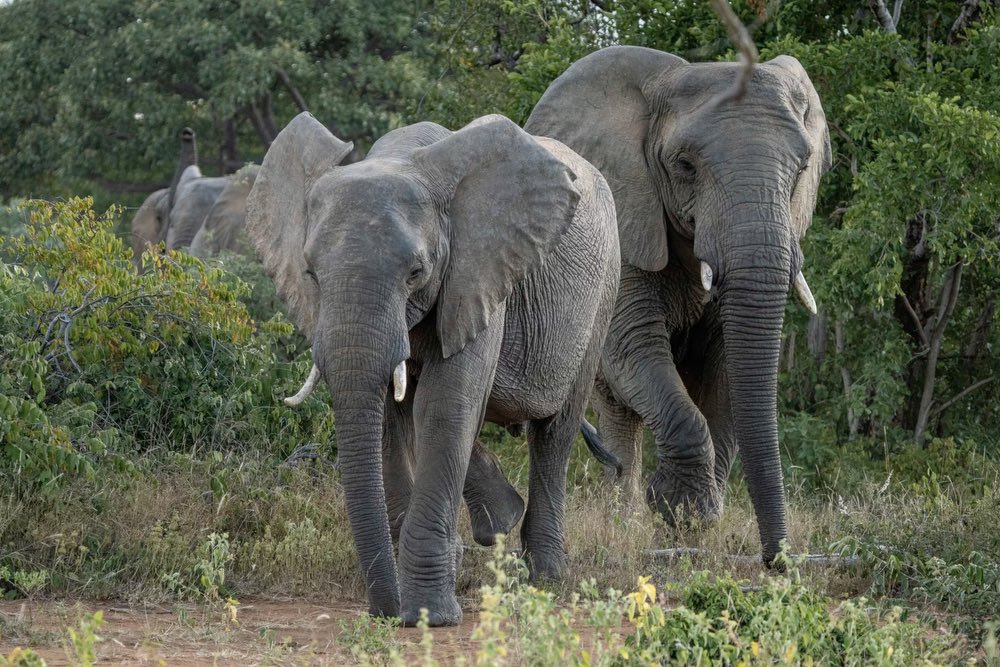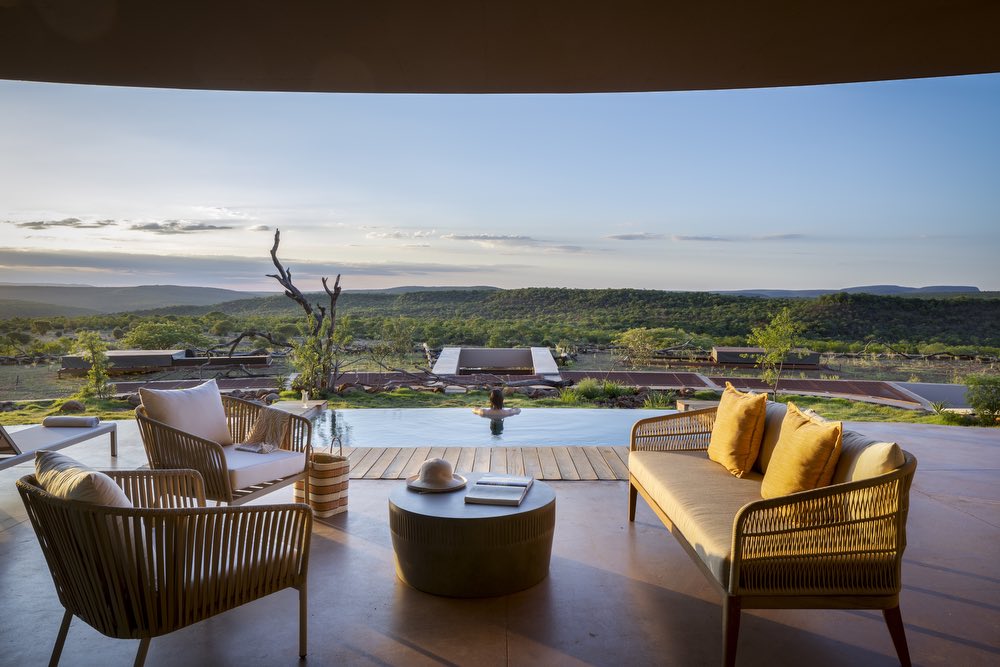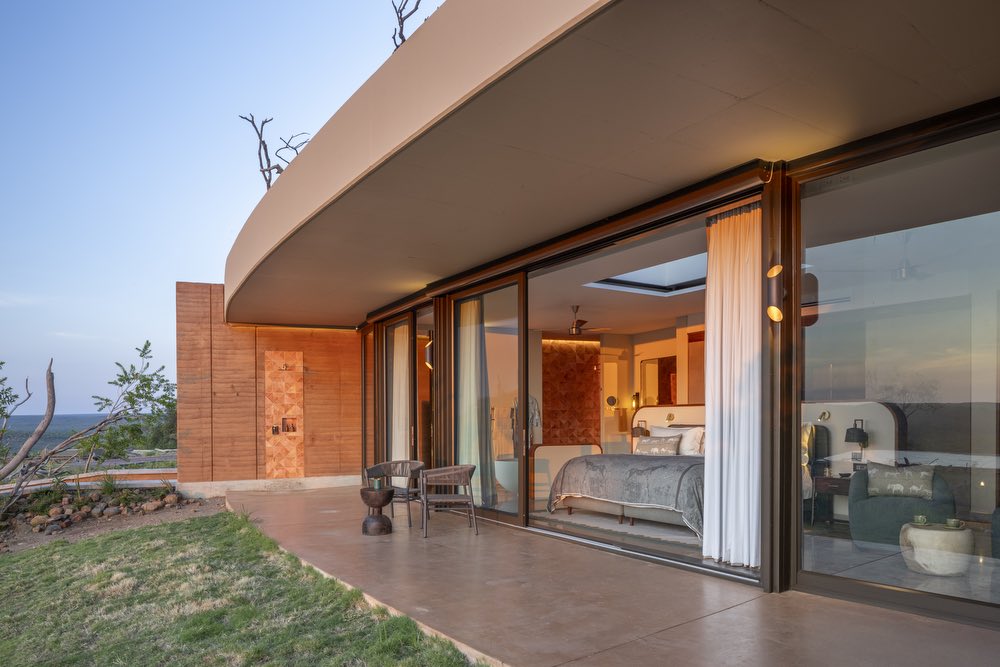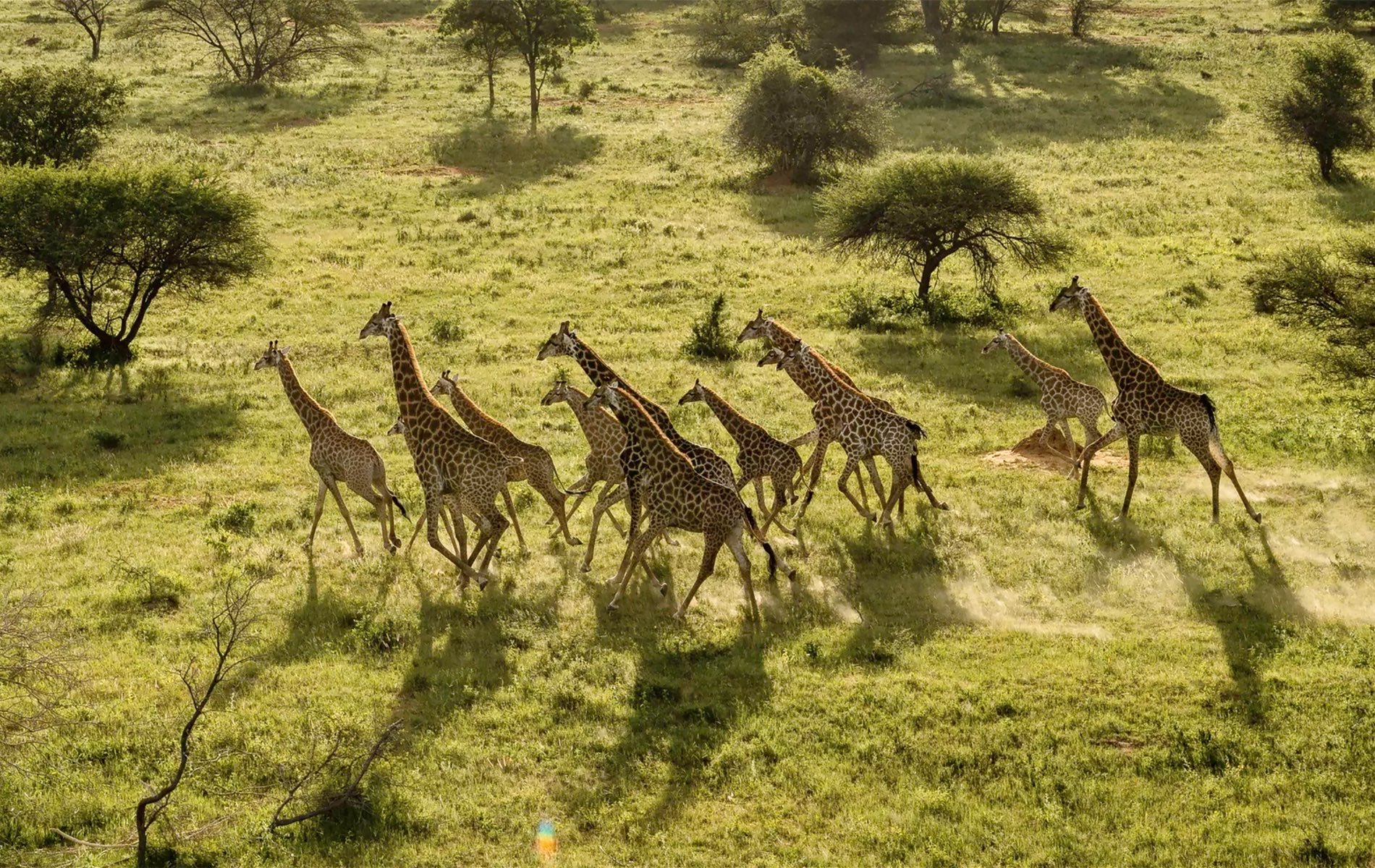
vie-magazine-nov-2024-melote-house-resort-africa-hero
A herd of giraffes running in the Lapalala wilderness of South Africa
Safari with a Purpose: Melote House
November 2024
Protecting Africa’s Wildlife
By Xenia Taliotis | Photography courtesy of Lepogo Lodges
Excitement had made the day start earlier than it needed to. Much as I had tried to extend sleep, I couldn’t rest. Today was the day we would be given a tiny, first-hand glimpse of what protecting the animals in South Africa’s 118,000-acre Lapalala wilderness, in the Unesco-listed, malaria-free Waterberg Biosphere of Limpopo, some 185 miles north of Johannesburg, involved.
After three days on the reserve, staying at Melote House, one of only three lodges in Lapalala, we had seen some of the most majestic—and vulnerable—animals on earth, albeit their bulk or speed should have made them invincible.
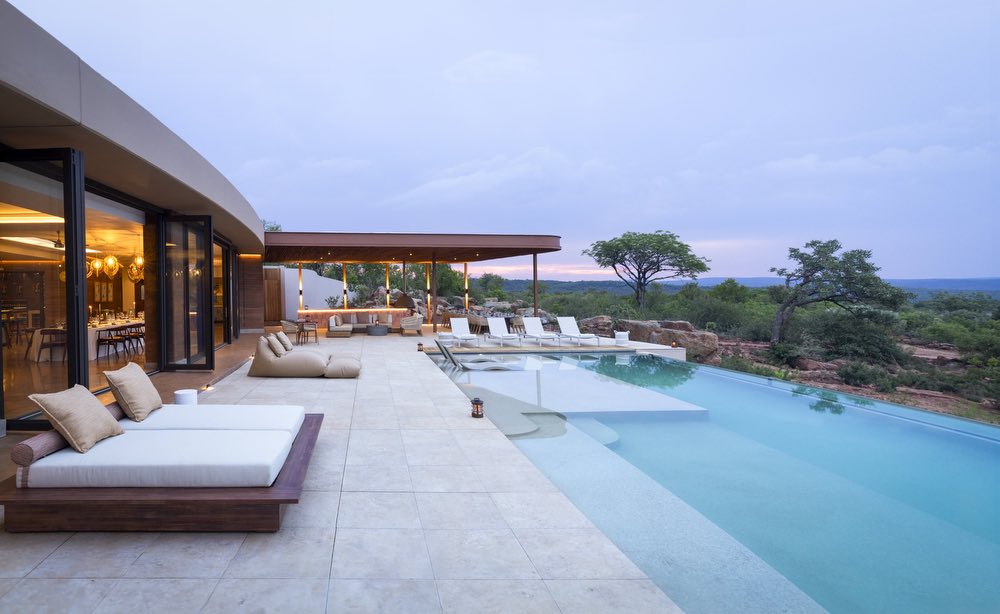
We sat in our jeep as a herd of elephants grazed past us. Their bodies were so close that we could count the folds in their skin and the muscles in their trunks. We crept through the wilderness, following the track marks of cheetahs until we found two brothers at rest and play. From a distance, we watched a gray rock against the mountain move. My eyes strained to bring the shape into focus, and as they did, I felt goosebumps rise on my arms. What emerged through my blurry vision and the noon-day haze of heat rising from the earth was one of the world’s oldest and most endangered creatures—a black rhino.
Our lodges, Noka Camp and Melote House aim to safeguard and preserve Lapalala and its wildlife, which we do by providing guests the ultimate in accommodations, service, food and beverage, and experiences, including two daily game drives
With a weight of up to 2,975 pounds and 50 million years of evolution behind them, it may seem unlikely that rhinos will face extinction. However, human greed and Asia’s unfounded belief that rhino horn is a cure-all, wonder medicine have brought the species to the very brink of wipeout.
There was a catastrophic decline in numbers between 1960 and 1990 when poachers killed 97.6 percent of the global population. At one point, there were just 2,300 black rhinos left in the wild. Now, there are about 6,000 in all of Africa, but the demand for rhino horn is insatiable, so poaching remains a constant threat, and guarding the herds is a round-the-clock job in some countries.
Kate Hughes, operations director of Lepogo Lodges, which comprises Melote House and Noka Camp in Lapalala, established Lepogo as a nonprofit organization to protect Lapalala and its wildlife, including rhinos, cheetahs, and the recently added pangolins, the most trafficked animals in the world. Other inhabitants of Lapalala include wild dogs, buffaloes, lions, elephants, zebras, and giraffes.
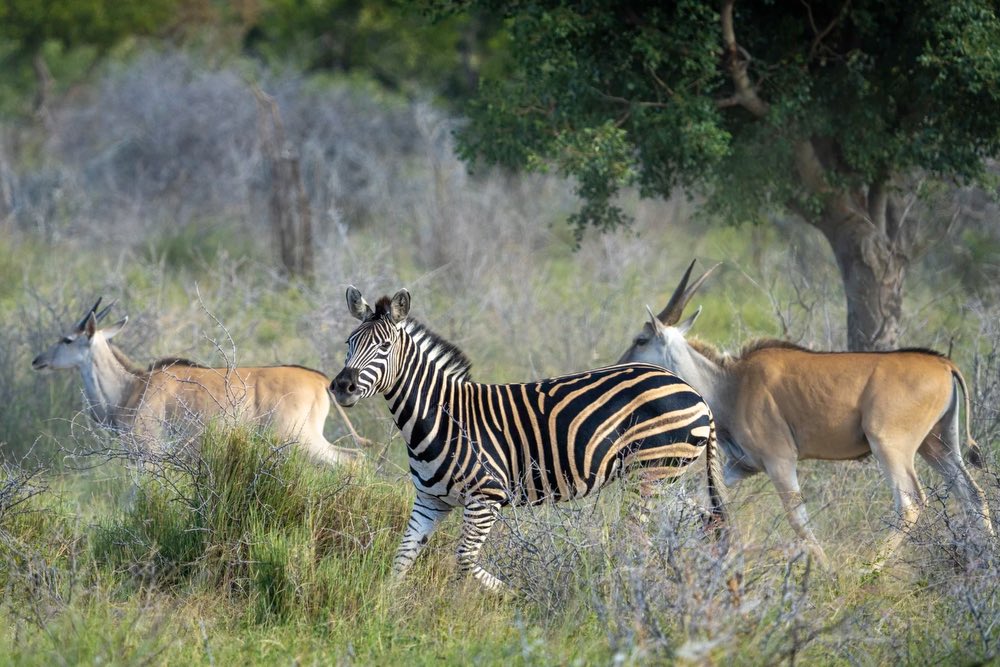
Hughes expressed that establishing a conservation legacy in Africa, where all financial gains are reinvested into the reserve, had been a lifelong aspiration. “Our lodges, Noka Camp and Melote House, aim to safeguard and preserve Lapalala and its wildlife, which we do by providing guests the ultimate in accommodations, service, food and beverage, and experiences, including two daily game drives,” she shares. “We strive to deliver the finest of everything.”
During our morning with the vets, Hughes joined us as we observed the tagging of a zebra and a warthog. I was curious why it was necessary to tag these animals, which involves a brief but stressful process of pursuing the animal by helicopter and then tranquilizing it from the air so that the ground team can attach a GPS. Vet Anamika explained, “Tagging the herbivores gives us a better understanding of their movements. This reserve is fenced, so we must manage nature to some extent to observe how the animals use the terrain and where they go. It helps us see the bigger picture and plan where and how we might need to intervene.”
Such guardianship is expensive: last year, animal protection, including surveillance cameras, GPS, air patrols, and twenty-four-hour anti-poaching rangers, cost more than thirty million rand ($1.65 million). “Leaving a conservation legacy is at the core of who we are, and by creating beautiful lodges with the highest possible standard of accommodations for guests, we can maximize our income, enabling profits which we return to the reserve for conservation projects,” says Hughes.
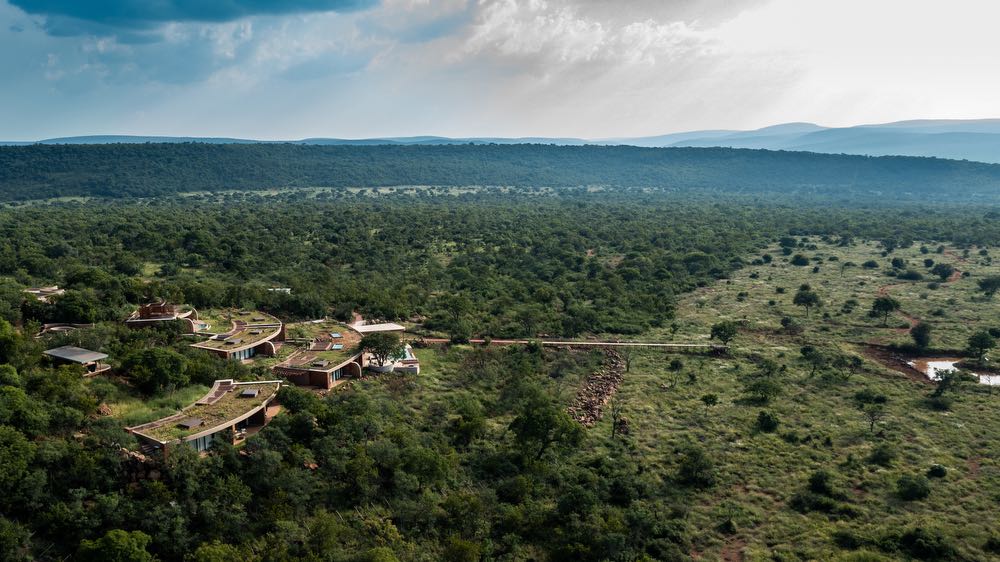
Melote House, operated by Lepogo Lodges, was designed to offer guests the ultimate luxury accommodations while blending with the land and supporting the environment as much as possible.
The team has indeed created something extraordinary at Melote. The property opened in 2024 and is a stunning sole-use getaway for up to sixteen people. Designed by world-class architects, including Yuji Yamazaki from New York’s YYA Architecture, Jacobus Uys and Jessica Rogers from Black Sable, which specializes in luxurious safari lodges, and Kelly Adami from Johannesburg-based Copperleaf Studio, Melote’s striking good looks are underpinned by the most stringent adherence to sustainability and a determination to leave as small an impact on the environment as possible.
The three-tiered property is made from rammed earth, which is a method of compacting natural materials, including the soil displaced during construction. It is built into the hill, and its curved shape does not just blend with the landscape but seems to emerge from it. “It was designed to be one with its setting,” says Hughes, “to be as much a part of the landscape as human ingenuity could achieve. We have living roofs that have been planted with native grasses and trees that will, in time, draw herbivores to feed there; we have off-grid renewable energy systems, including photovoltaic panels and sophisticated heating and cooling systems; we recycle water, and we offset the carbon footprint of every guest’s entire journey, from the moment they leave their homes to the moment they return.”
The team has indeed created something extraordinary at Melote. The property opened in 2024 and is a stunning sole-use getaway for up to sixteen people
Guests having breakfast on the terrace or enjoying a morning swim in the infinity pool might catch sight of impalas, giraffes, zebras, and even lions at the waterhole just beyond. In front, behind, and all around, Africa is wild and free. In such a location, it is impossible not to feel at one with nature: the views from Melote are incomparable. Endless. Timeless.
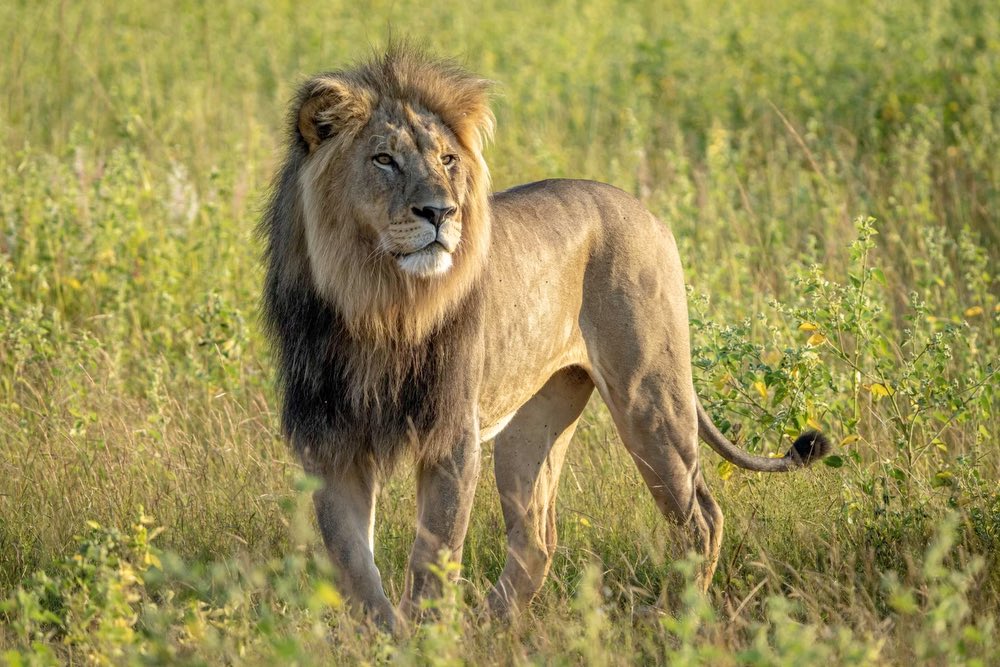
Once inside, guests will find that the decor, though inspired by the colors and hues of the bush, is far from your typical safari lodge. The atmosphere is more cosmopolitan and contemporary, which was precisely what Hughes intended. “My hope is that Melote House stands as a beautiful, sustainable house on its own—a destination in itself with the wonders of an incredible safari experience, a bonus,” she says. “The interior design celebrates the landscape, originates from it, and tells its story in subtle and elegant ways.”
Hughes collaborated with award-winning designer Kelly Adami to discover and acquire artwork by some of South Africa’s leading artists. Evolution Product printed a painting by Clive Walker, the conservationist behind The Endangered Wildlife Trust, on fabric, which was then used to create throws and screens. The gorgeous custom and hand-made hemp table linen is by Mogalakwena Craft Art Development Foundation, which provides employment opportunities for local individuals and promotes the preservation and continuation of traditional craft skills.
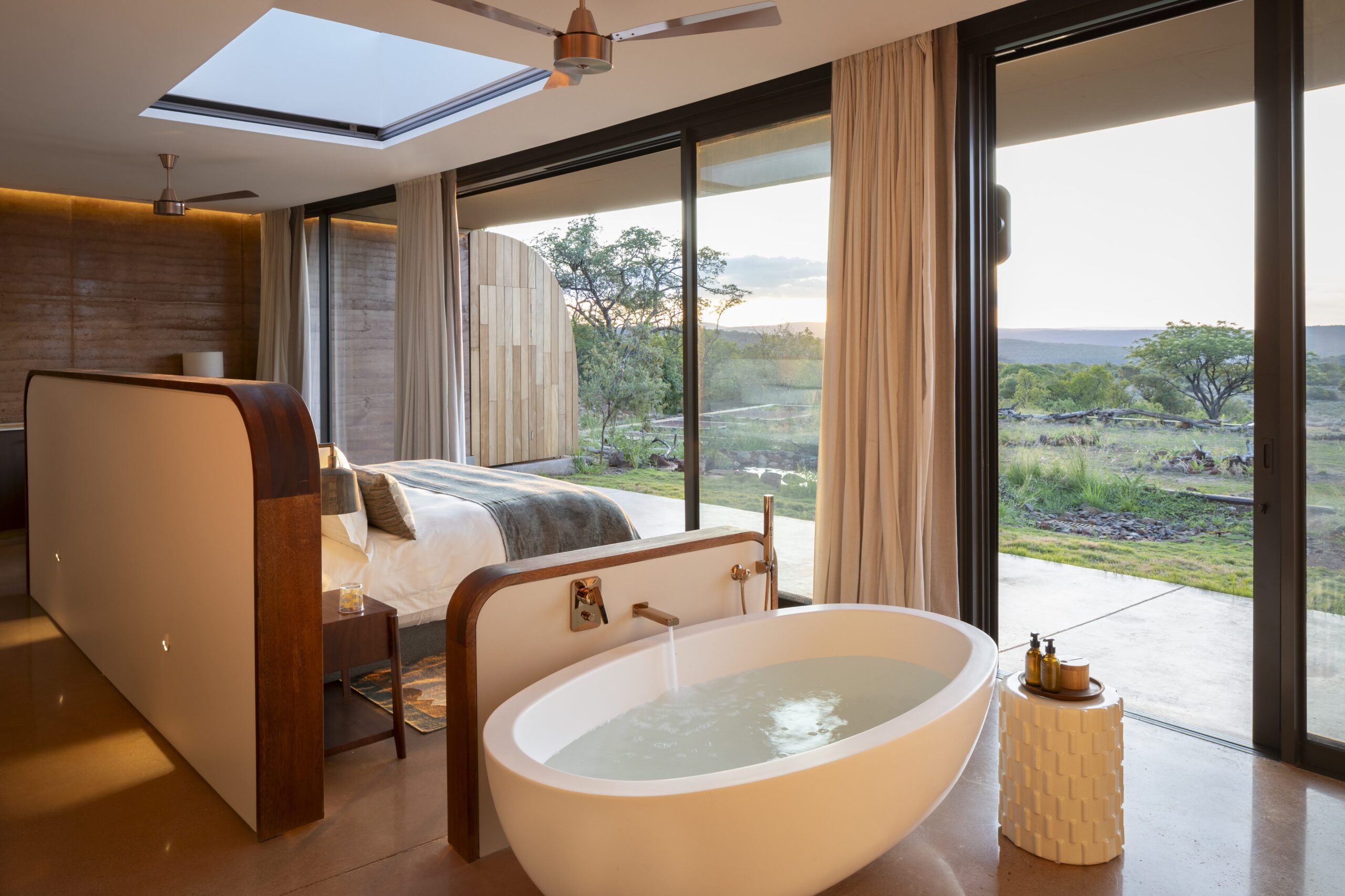
The skill, sophistication, and perfectionism of the work are evident in every inch of Melote. The guest suites—six in the main house and an additional two in a separate cottage—have floor-to-ceiling windows that open onto a private terrace with an outdoor shower. There is a second shower inside, a bathtub, a double vanity unit, a walk-in wardrobe, and a lavish selection of drinks and snacks. Most of all, though, I loved the skylight above the bed. All I had to do to draw its shade was press a button by my bed, and above me was the sky alight with stars. Heaven.
The suites are a sanctuary, while the rest of the house is meant for spending time with family and friends. The main living area includes a library, study, bar, lounge, and dining area. All meals are served here, ranging from fresh fruit salads, homemade granola, and egg dishes for breakfast to sushi for lunch and ostrich pad thai for dinner. Additionally, there is a gym, a spa, and a rock pool and bar on the top level of the property. This is a magical place to enjoy a sundowner while reflecting on the day’s activities and planning for the next.
— V —
Melote House is a fully staffed property for up to sixteen people, available for exclusive use. The main house features six suites, and the adjacent cottage has two more. Prices start from $14,800 per night (270,000 South African Rand). Situated in the Lapalala Wilderness Reserve in South Africa’s Limpopo Province, Melote House is accessible from Johannesburg Airport by a 3.5-hour drive or a forty-minute charter flight. For more information or to book your stay, visit LepogoLodges.com.
Share This Story!
KEEP UP WITH THE LATEST STORIES FROM VIE



